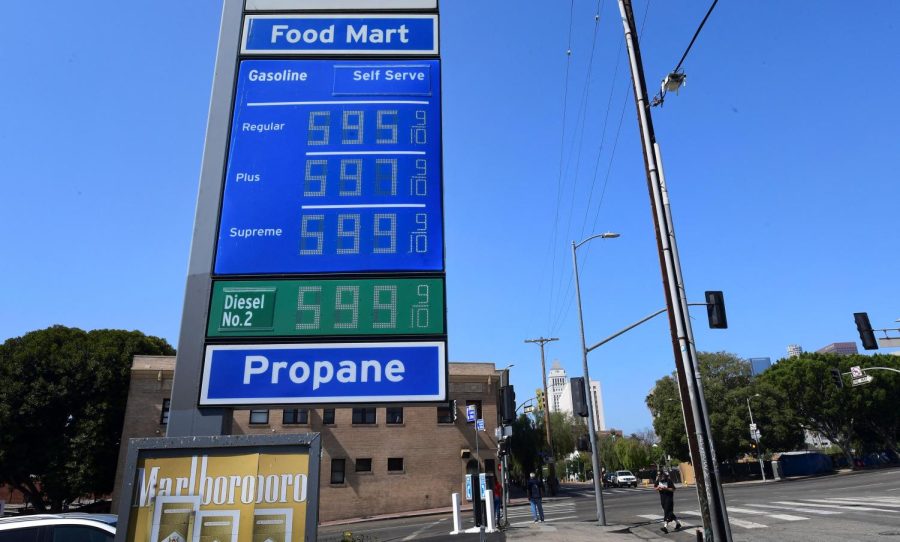Got Fuel? California Leads Nation with Highest Gas Prices
November 10, 2021
Gas prices have spiked since the world reopened post the COVID-19 shutdown. Experts weigh in on why there is a trend in soaring gas prices.
Gas prices keep on rising by the day, especially in California. The spike in gas prices has caused many to wonder why the cost to pump is causing a dump in their wallets.As of September, in the Bay Area, gas prices averaged $4.59 per gallon in the San Francisco, Oakland, and Hayward areas. However, there’s been an increase in the current state’s average cost per gallon that is now averaged at $4.62 per gallon, according to AAA.
CBS News 8 reported that the average price is 6.1 cents more than one week ago, 15.5 cents higher than it was a year ago.
There’s been a revival in our economy post the state-mandated lockdown. As the vaccinated populations increase, gas prices have risen due to the new economic activity.Since COVID-19 vaccines lifted many mandates for stay-at-home orders, there’s been a surge in demand for oil. During the summer months, gas prices are likely to be higher due to many people traveling. However, on the contrary, in the fall months, gas prices are cheaper.
The reports show that the influx of demand for crude oil has sparked the expensive cost of fuel which has caused fall gas prices to remain high despite the low inventory of oil and gas.
According to NPR, global crude oil prices increased to $80 a barrel for the first time in almost three years. Forbes reported that the price will go up to $120 a barrel by June 2022, a 45% increase compared to the current cost.
In addition to pricey fuel, energy prices are seeing a surge in greenhouse emissions such as natural gas, crude oil, and coal. Greenhouse gas emissions are sourced by human activity such as transportation (cars, planes, and trains). This is one of the leading causes of climate change and other environmental health effects.
“One would hope that the rising price of fuels would create a disincentive to their use and hence reduce the resultant greenhouse gas emissions that are causing climate change, which now poses an existential threat to humanity” stated Dr. Karina Garbesi, a Full Professor in the Dept. of Anthropology, Geography, and Environmental Studies at California State University, East Bay.
Energy policies and renewable gas measures are being implemented, but change will not happen overnight. “We simply can’t transition to a ‘clean’ energy system overnight. All energy transitions in history have taken at least 50 years” stated Dr. James Rector, Professor of Geosystems: exploration geophysics, applied seismology, machine learning in the oil and gas industry at the University of California, Berkeley.
Despite the ripple effects of large gas emissions and inflated gas prices, there’s a silver lining. “A little-known fact is that the US has decreased emissions by nearly 30% since 2005 (we are doing it!) primarily due to natural gas replacing coal — renewables played a much smaller part,” continued Rector.
The oil industry is in high demand as more and more people take the road. The growing demand for fuel products will continue to push prices higher for gasoline and diesel. California is showing no signs of gas prices lowering anytime soon.
There are ways you can fuel your tank and save some money. Apps like GasBuddy allow you to find cheap gas prices in your area. Also, enrolling in gas rewards programs and taking advantage of grocery store reward programs will help you save money while fueling up.







